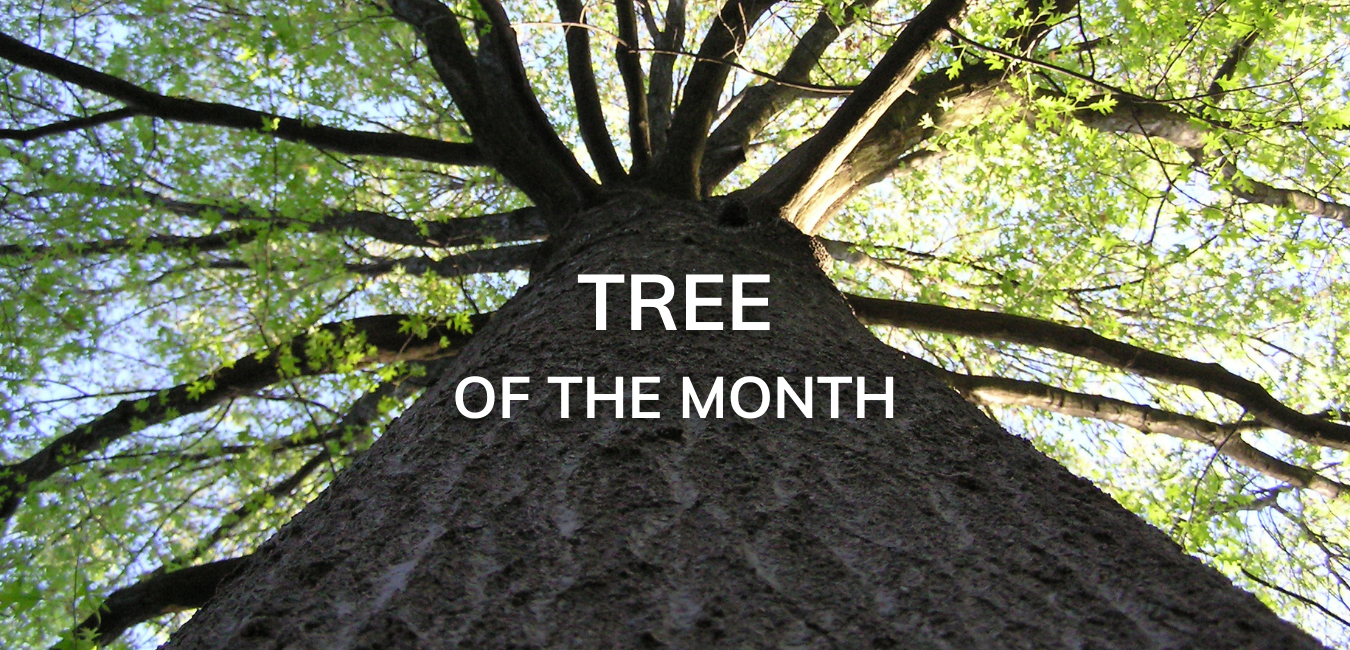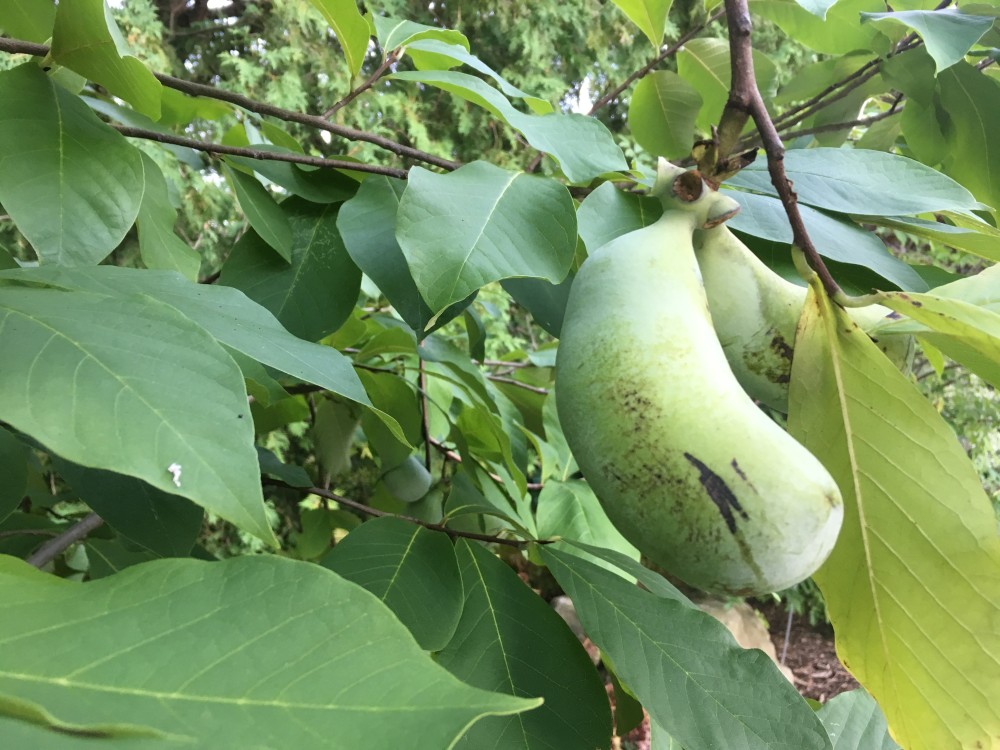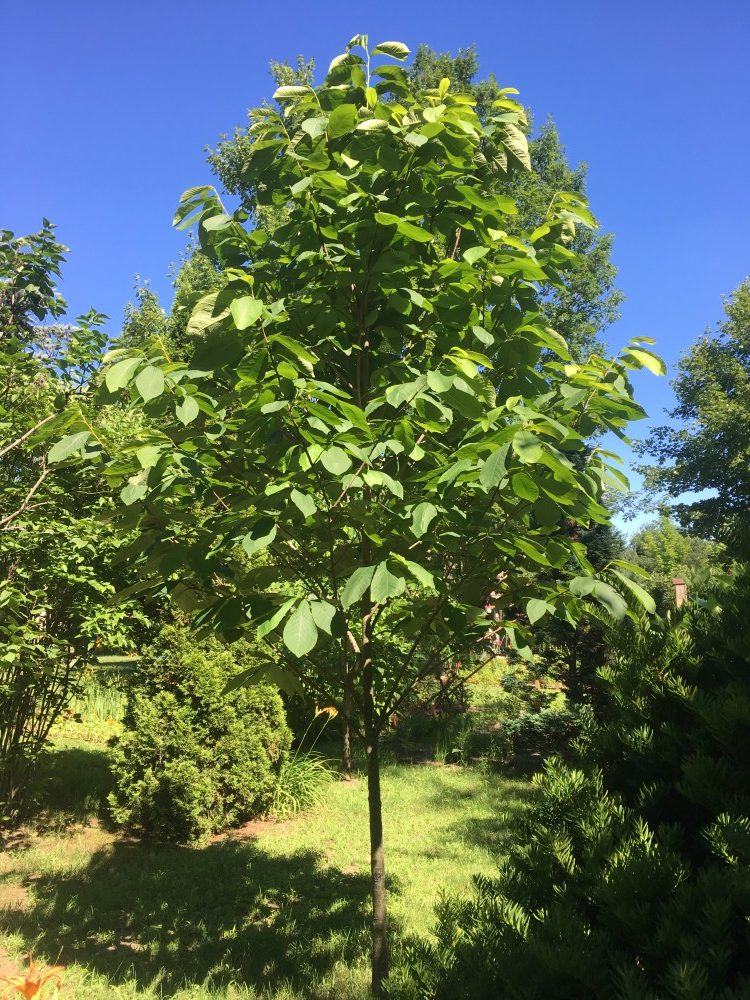The pawpaw is a small tree (or tall shrub), the only local member of the tropical custard apple family. In Canada, it is unique to the Carolinian forests of SW Ontario, around Lake Erie and the Niagara Region, especially in the wetter floodplain areas. It grows at a medium rate, about 33 to 61 cm (13 to 24 in) per year, and can reach 15 m (50 ft). It is generally found as an understory tree. Since its leaves and branches are deer resistant, some scientists speculate that it may eventually become a canopy tree, outgrowing other tree species that are regularly foraged (and damaged) by deer. The pawpaw prefers moist to wet, rich loam soil, and part to full shade.
Its leaves are large and smooth, up to 30 cm (11 in) long, and hang down, giving it a tropical appearance. In the fall, the leaves turn a rich yellow. Its bark is gray-brown and smooth until it gets old. Within 4 to 8 years, the young pawpaw begins flowering and producing fruit. The reddish purple, cup-shaped flowers appear in April to May and don’t give off a very appealing smell; they draw pollinators like flies and beetles, but not bees. The oblong fruit, sometimes growing in clusters, are a yellow-green that mature to a dark brown with soft, yellowish orange flesh in the fall. The fruit is edible and tastes sweet, banana-like, with hints of mango, vanilla and citrus.
Due to its inability to attract many pollinators, and due to the fruit’s popularity among many animal species, finding its fruit in the wild can be challenging. Opossums, foxes, squirrels, raccoons, and birds all enjoy the fruit. Although not readily planted by local city crews, the pawpaw adds notable interest with its lush, tropical appearance, and would make a great addition to any garden or yard.
References
https://www.ontario.ca/page/pawpaw
https://treecanada.ca/resources/trees-of-canada/pawpaw-asimina-triloba/
https://www.uoguelph.ca/arboretum/thingstosee/trees/pawpaw
https://www.arborday.org/trees/treeguide/TreeDetail.cfm?ItemID=2579
https://www.nps.gov/articles/pawpaw.htm
Images Source: https://onplants.ca/product/asimina-triloba/




